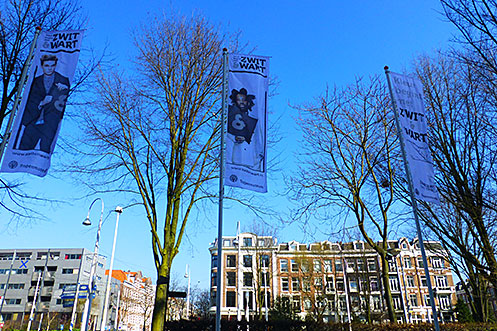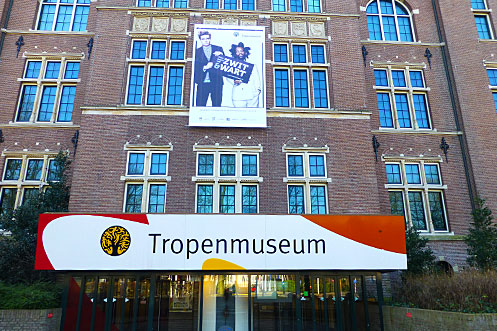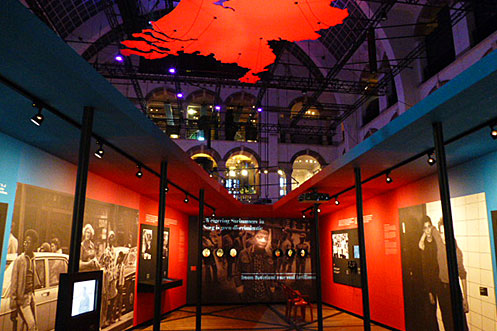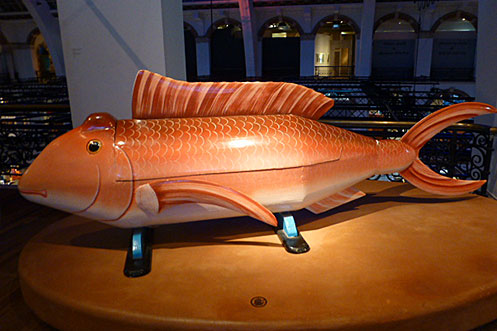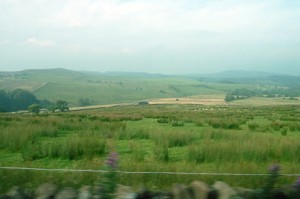Not that I’m uncultured but I’ve never really seen the appeal of traipsing round endless museums when I’m on a city break just for the sake of it. Amsterdam is full of famous (and not so famous) museums. And while some of them are genuinely fascinating – the Van Gogh Museum (which I prefer to the Rijksmuseum), the Anne Frank House, the Jewish Museum Amsterdam (I’m Jewish so interested in learning about my heritage) –I’ve never felt any obligation to visit all of Amsterdam’s many museums.
The Tropenmuseum Amsterdam (Museum of Tropics) is one such museum. Located close to Oosterpark, the Tropenmuseum Amsterdam is one of Europe’s leading ethnographic museums (ethnography is the study of social interaction, behaviours and perception that happens within groups). I’d heard from a couple of friends the Tropenmuseum Amsterdam was worth a visit. But it wasn’t until I read about the latest exhibition Black and White at the Tropenmuseum Amsterdam (plus I was in possession of a Museum Card which gives you free entry into most of Amsterdam’s major museums) that I thought I’d check it out.
I was under the impression that the Tropenmuseum Amsterdam was all about Dutch culture and heritage, and the influences of other cultures on the Dutch. While the exhibits on the top floors were interesting, I was a little confused. Firstly by the layout, I couldn’t tell where each exhibit started and finished. I also couldn’t quite work out what relevance some of the exhibits had to the Dutch, for example the culture of death in Mexico or the faith of gods in India? Perhaps if you pay for the audio guide it all becomes clear. But I still managed to pick up some real nuggets of info. A great example was that in Ghana people were buried in coffins that depict their profession. So a fisherman, for example ,would be buried in a fish-shaped coffin.
For me it was the first floor, and the temporary exhibition at the Tropenmuseum Amsterdam on Black and White, that was most intriguing. Black and White delves into the subject of race in Holland, looking at the Dutch attitude to colour. The subject matter tackles the slavery of people from the Surinamese and Indonesian Dutch colonies and the abolition of slavery in Holland (which came about as a result of British duress).
The exhibition at the Tropenmuseum Amsterdam examines what it means to be black in Holland today, looking at how people of different colours live together in society through video, audio and first person accounts. It even raises the controversial topic of whether the popular Dutch Christmas tradition of (Zwarte Piet) Black Pete is racist (75% of people questioned think it is) which begs the question of why it’s still allowed. Black and White at the Tropenmuseum Amsterdam is a thought provoking exhibition and this hidden gem is well worth checking out. Bear in mind though that it’s a temporary display and is only running at the Tropenmuseum Amsterdam until 1 July 2014.
